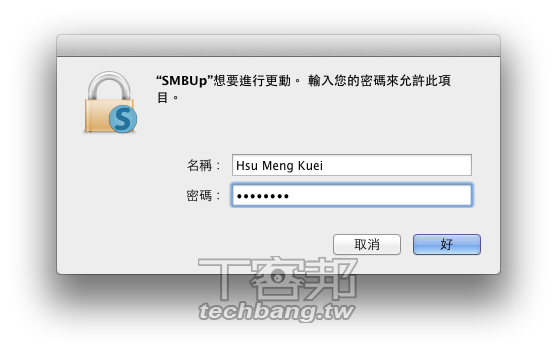

All trademarks, registered trademarks, product names and business names or logos that talked about in here are the property of their respective owners.
DOWNLOAD SMBUP FOR MAC
SMBconf is definitely an app for MAC that created by Inc. Whenever you click the “ Download” link on this web page, files will downloading directly from the owner sources Official Server. dmg installation file is completely not hosted in our Server. Make sure SMBUP is opened at login so that you dont have to open it every time you start your OS. If you want to delete a share, just select and hit 'delete' on your keyboard.
DOWNLOAD SMBUP INSTALL
Reinstate and manage Samba on OS X 10.7 Lion. Install it and ' Add new shared drives '. Here we go some list of an alternative/related app that you must try to install into your lovely MAC OSXįile and print server for SMB and CIFS clients.
DOWNLOAD SMBUP MANUAL
Method 1: Remove apps using LaunchpadĪnother manual way to delete SMBconf apps from your Mac is using the Launchpad. To completely uninstall a program on MacBook/iMac, you have to choose one of the options on below. Removing SMBconf apps is more than just moving them to the Trash - it’s completely uninstalling them. When you’re done installing the application, it’s a good idea to unmount the DMG in Finder. But Applications is the most convenient place to put things, so we suggest you just put everything there.ĭMG files are mounted by your system, like a sort of virtual hard drive. Some people create a “Games” directory, to keep games separate from other applications. You don’t have to put your programs in the Applications folder, though: they’ll run from anywhere.

DOWNLOAD SMBUP MAC OS
Download Now ' (Via MacUpdate - Mac OS X.) Eingestellt von kurzundgut am Freitag, Januar 20, 2012. Most Mac OS applications downloaded from outside the App Store come inside a DMG file. SMBUp re-instates Samba as a service of your mac and provides a simple interface to manage the service.

SMBconf for MAC Preview/caption] New Features If you face issues connecting to your NAS, or connections to Windows file servers don’t work as expected (e.g., inability to rename files or folders), it may help to switch back to the slower but more reliable SMB 1. OS X 10.9 (Mavericks) brought SMB 2 as the default network protocol with OS X 10.10 (Yosemite), SMB 3 was added. SMBconf switches to SMB 1 on OS X 10.9 or later.


 0 kommentar(er)
0 kommentar(er)
